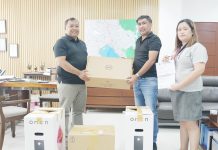PALO, Leyte — At least two major projects meant for the recovery of the region’s coconut industry, which was badly damaged by super typhoon ‘Yolanda’, will no longer be completed with the absence of funds, said an official of the Philippine Coconut Authority (PCA) Thursday.
PCA Eastern Visayas Regional Manager Joel Pilapil said that since 2013, there has been no post-disaster fund releases for the rehabilitation of the industry, rendering the fertilization and intercropping projects incomplete.
In December 2013, the central government disbursed P2.8 billion to the coconut sector in the three Visayas regions out of the P7 billion proposed funds for four major recovery projects, said Pilapil.
“After that, there had been no releases for coconut. We’re able to complete coconut replanting and debris management, but not the fertilization and intercropping,” Pilapil said.
The official made the statement after the Regional Project Monitoring Committee recently listed coconut fertilization as the most delayed project in Eastern Visayas.
The P238.32 million fertilization program only covered 31,214 hectares of the 233,784 hectares original target.
Another major setback in the fertilizer project is the outsourcing of procurement of 74,485 bags to the Philippine International Trading Corporation, as decided by the Office of the Presidential Assistant for Food Security and Agricultural Modernization created by the previous administration.
“Until now, the process of procurement is still not complete,” Pilapil said.
For the P334.05-million intercropping project, only 64,460 hectares have been covered out of the 229,490 hectares of target area.
Intercropping was included as a post-disaster activity to create livelihood opportunities while farmers wait for the full recovery of their coconuts.
Overall, the region received P1.56 billion for the coconut industry in 2013, including the P468.42 million for replanting, and P525.74 million for debris clearing.
Super typhoon Yolanda affected 33 million trees — nearly half of which were totally damaged, according to PCA.
The “fragile” coconut industry after Yolanda was aggravated by another natural threat as Typhoon Ruby damaged at least 200,000 coconut trees by the end of 2014.
The number of fruit-bearing coconut trees decreased by a quarter after the two typhoons.
The highest percentage of reduction was recorded in the provinces of Leyte and Eastern Samar. In 2015, nut-bearing trees stood at 34.48 million, the lowest in decades.
According to a report by the National Economic and Development Authority, Region 8 had been one the country’s consistent top producer of coconuts, next to Davao Region from 1997 to 2011.
However, it eventually slipped into the third rank in 2012, fourth in 2013, and sixth in the last two years. Despite this, coconut remains a primary commodity in the region, comprising around 40 percent of its crop production.
(SARWELL Q. MENIANO/PNA)



